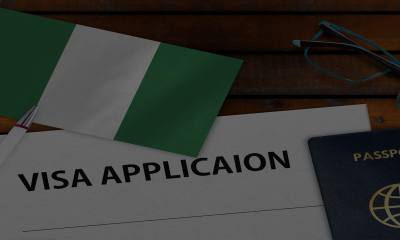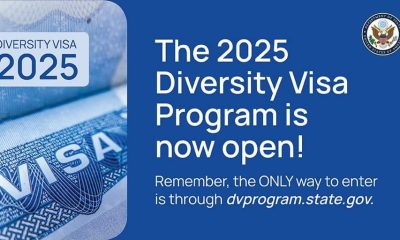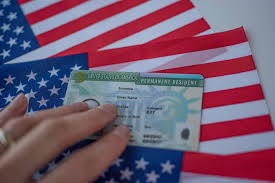Travel
Everything You Need to Know About Canada Immigration: A Comprehensive Guide
Canada, with its strong economy, world-class healthcare, high quality of life, and welcoming attitude towards immigrants, has become one of the most sought-after destinations for individuals seeking a fresh start. Each year, hundreds of thousands of people from across the globe choose Canada as their new home. Whether you’re looking to study, work, or settle permanently, Canada’s immigration pathways are diverse, offering opportunities for people from all walks of life.
This blog will guide you through everything you need to know about Canada’s immigration system, including the different immigration programs, eligibility requirements, and how you can begin your journey.
Everything You Need to Know About Canada Immigration
Why Immigrate to Canada?
Canada offers several advantages for immigrants:
- Economic Opportunities: Canada’s economy is robust, with opportunities in various industries such as technology, healthcare, engineering, and more.
- High Quality of Life: Canada consistently ranks high in global indexes for quality of life, healthcare, safety, and education.
- Multicultural Society: Canada is known for its diverse, inclusive, and immigrant-friendly policies.
- Pathways to Permanent Residency: Many immigration programs offer a clear route to permanent residency (PR) and citizenship.
Main Pathways for Immigration to Canada
Canada offers numerous immigration programs, categorized mainly into economic immigration, family sponsorship, refugee and humanitarian programs, and temporary residency that can lead to permanent residency.
1. Economic and Business Immigration
Economic immigration is one of the most common pathways to move to Canada. These programs are designed for skilled workers, entrepreneurs, and investors. Below are the major programs within this category:
a. Express Entry System
The Express Entry system is one of the most popular and fastest immigration pathways to Canada. It manages applications for three main economic immigration programs:
- Federal Skilled Worker Program (FSWP): For skilled workers with foreign work experience who want to move to Canada permanently.
- Federal Skilled Trades Program (FSTP): For people qualified in skilled trades.
- Canadian Experience Class (CEC): For those with recent Canadian work experience.
How it works: Candidates create an Express Entry profile and are given a score based on the Comprehensive Ranking System (CRS), which considers factors like age, education, language proficiency, and work experience. Those with the highest scores receive an Invitation to Apply (ITA) for permanent residency.
b. Provincial Nominee Programs (PNPs)
Each of Canada’s provinces and territories (except Quebec) has its own immigration program called a Provincial Nominee Program. PNPs allow provinces to nominate individuals who meet their specific labor market needs for permanent residency. Some PNP streams are aligned with Express Entry, offering a faster route to immigration.
c. Quebec Immigration Program
Quebec operates its own immigration system, separate from the federal government. The Quebec Skilled Worker Program (QSWP) is the primary pathway for skilled workers wishing to settle in the province. Applicants are selected based on a points-based system similar to Express Entry.
d. Global Talent Stream (GTS)
Part of the Temporary Foreign Worker Program, the GTS allows highly skilled workers to come to Canada quickly (often within two weeks) and later apply for permanent residency. This program is particularly attractive to those in tech and other high-demand sectors.
2. Family Sponsorship
Canada values family reunification and allows Canadian citizens and permanent residents to sponsor their close relatives to come to Canada as permanent residents. The primary categories of family sponsorship include:
- Spouse/Partner Sponsorship: You can sponsor your spouse, common-law partner, or conjugal partner to become a permanent resident.
- Parent and Grandparent Sponsorship: This allows Canadian citizens and PR holders to bring their parents and grandparents to Canada.
- Dependent Child Sponsorship: You can sponsor your dependent children under the age of 22 to live in Canada.
Family sponsorship programs do not require job offers, and processing times vary depending on the relationship and location of the applicant.
3. Start-Up Visa Program
Entrepreneurs who have innovative business ideas and are supported by a designated organization (such as venture capital funds or angel investors) can apply for the Start-Up Visa Program. This program offers permanent residency to entrepreneurs who wish to launch a business in Canada.
4. Temporary Work Permits and International Mobility
If you’re not ready to commit to permanent residency, Canada also offers various temporary work permits. Some of these permits may lead to PR if you gain Canadian work experience.
a. Temporary Foreign Worker Program (TFWP)
Employers can hire foreign workers to fill temporary labor shortages through the TFWP, provided they obtain a Labour Market Impact Assessment (LMIA).
b. International Mobility Program (IMP)
This program allows workers to obtain an LMIA-exempt work permit if they fall into categories such as intra-company transferees, international agreements, or other specialized categories.
5. Student Pathway to Immigration
Canada is a top destination for international students, and studying here can be an excellent route to permanent residency. After graduating, students can apply for a Post-Graduation Work Permit (PGWP), which allows them to work in Canada for up to three years.
The work experience gained under a PGWP can help international students qualify for permanent residency through the Canadian Experience Class (CEC) or a Provincial Nominee Program (PNP).
6. Refugee and Asylum Programs
Canada is committed to protecting individuals who are fleeing persecution, war, or violence in their home countries. Through refugee resettlement programs, refugees can apply for protection and eventually become permanent residents.
Step-by-Step Guide to Applying for Canadian Immigration
Here’s a brief overview of the steps involved in applying for immigration to Canada:
- Choose the Right Immigration Program: Based on your profile and goals, choose the immigration program best suited to you.
- Check Your Eligibility: Each program has its own set of requirements, so ensure that you meet them before applying.
- Gather Required Documents: This typically includes proof of education, work experience, language test results (IELTS, CELPIP), and other supporting documents.
- Submit Your Application: Most immigration programs, including Express Entry and PNP, allow online applications through the Immigration, Refugees and Citizenship Canada (IRCC) portal.
- Receive an Invitation or Nomination: If applying through Express Entry, you’ll receive an Invitation to Apply (ITA) if you’re among the top-ranked candidates.
- Submit Final Application for PR: Once invited, you will submit a complete application for permanent residency along with fees.
- Attend Medical Exams and Provide Biometrics: You may need to undergo a medical exam and provide biometric data as part of the process.
- Receive Confirmation of Permanent Residency (COPR): If your application is approved, you’ll receive COPR, after which you can move to Canada and officially become a permanent resident.
What are the basic requirements for immigration to Canada?
The basic requirements for immigration to Canada vary depending on the specific immigration program you are applying for. However, there are some general requirements that apply to most programs:
- Eligibility: You must meet the specific eligibility criteria for the program you are applying for. This may include requirements related to age, education, work experience, language skills, and other factors.
- Medical exam: You may be required to undergo a medical exam to ensure you are in good health and do not have any medical conditions that could pose a risk to public health.
- Security clearance: You will need to undergo a security clearance to ensure you do not pose a security threat to Canada.
- Proof of funds: You may need to provide proof of sufficient funds to support yourself and your family in Canada.
- Language skills: You may need to demonstrate proficiency in English or French, depending on the program you are applying for.
Here are some of the most common immigration programs to Canada:
- Express Entry: This is a points-based system that selects skilled workers for immigration.
- Provincial Nominee Programs (PNPs): These programs allow provinces and territories to nominate candidates for immigration based on their skills and experience.
- Family sponsorship: This program allows Canadian citizens and permanent residents to sponsor their family members for immigration.
- Business immigration: This program is for entrepreneurs who want to invest in a Canadian business.
- Refugees and protected persons: This program provides protection to people who are fleeing persecution or human rights abuses.
It’s important to note that these are just a few examples, and the specific requirements for each program may vary.
What is the fastest way to immigrate to Canada?
There is no single “fastest” way to immigrate to Canada. The speed of the process depends on various factors, including the specific immigration program you choose, the completeness of your application, and the current processing times for IRCC (Immigration, Refugees and Citizenship Canada).
However, some programs may generally have shorter processing times compared to others. Here are a few examples:
- Express Entry: This program is designed to be relatively fast. Candidates are ranked based on their eligibility factors (age, education, work experience, language skills, etc.), and those with the highest scores are invited to apply for permanent residence.
- Certain Provincial Nominee Programs (PNPs): Some PNPs have faster processing times, especially for those who meet the province’s specific criteria.
- Family sponsorship: If you have a family member who is a Canadian citizen or permanent resident, they can sponsor you for immigration. This process can sometimes be faster than other programs.
It’s important to note that even these programs can vary in processing times. The volume of applications, the complexity of your case, and other factors can influence how quickly your application is processed.
To get the most accurate information about processing times for your specific situation, I recommend checking the IRCC website or consulting with a professional immigration advisor. They can provide you with personalized advice and help you choose the most suitable program for your circumstances.
Conclusion:
Immigrating to Canada is a structured but accessible process for those who meet the eligibility criteria and follow the right steps. With numerous programs designed to cater to different categories of people, from skilled workers to entrepreneurs and family members, there is likely an immigration pathway suited to your situation. The key is to understand your options, prepare thoroughly, and work through the process step-by-step. Canada’s immigration system is known for its fairness and efficiency, making it an attractive choice for those looking for new opportunities in a welcoming and diverse country.










